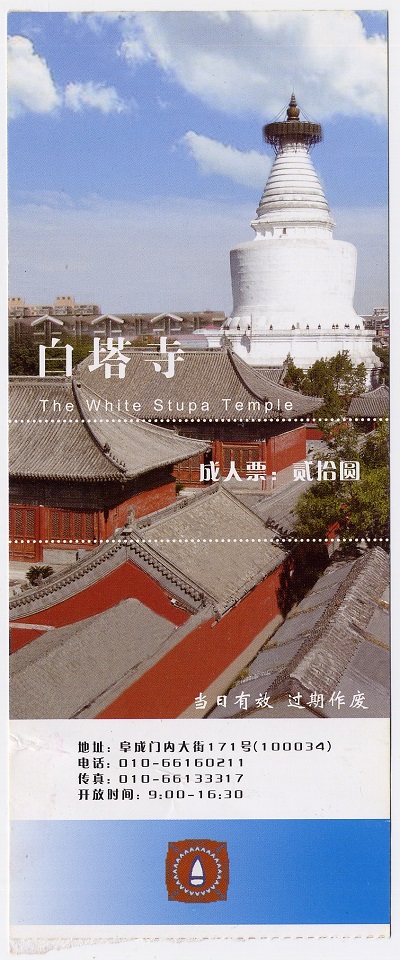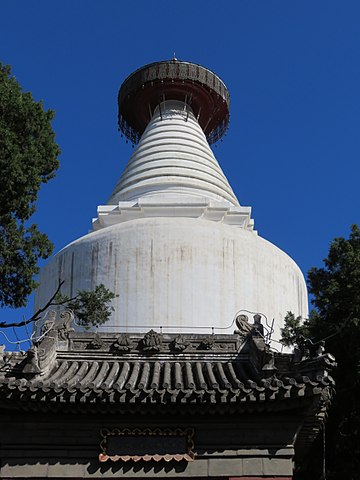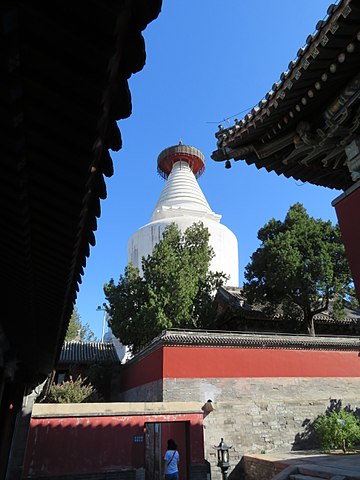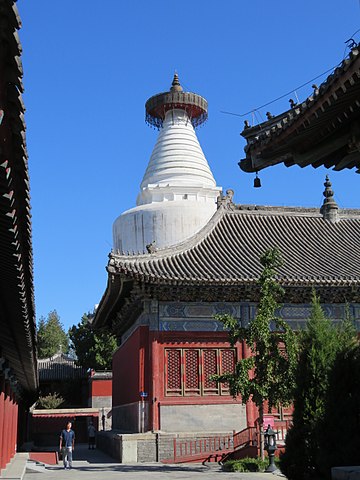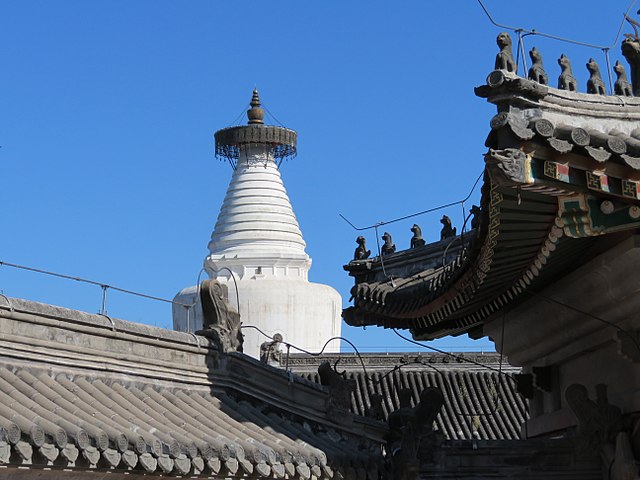Diary of a Rambling Antiquarian
Tuesday, 19 September 2017
Beijing White Stupa
When I was last in Beijing in December 2013, I tried to visit three pagodas, but two of them, incuding the famous White Stupa of Miaoying Temple, were closed for repairs. Today I am going on a day trip to somewhere I also visited in 2013, but my train departs from Beijing West station at 10:15, so I think I have just enough time for a quick visit to Miaoying Temple, commonly known as White Stupa Temple (Báitǎsì 白塔寺). I get out of the Fuchengmen underground station at 9:00 am sharp, and it should only be a five minutes' walk to the great white stupa, but I still manage to misremember the location of the entrance to the temple (it is facing the main Fuchengmen Inner Street), and take a 10 minute detour around the alleys behind the temple. When I eventually get to the temple entrance, I see that the entire front of the entrance is being dug up and is unpassable. My heart sinks as I imagine that it is again closed for repairs. But I ask one of the labourers, and he signals me to go through the vehicular entrance on the side, and I find to my relief that the ticket office can be reached by this route, and the temple is open for visitors.
Entrance ticket for Miaoying Temple
I won't say anything more about the history of the White Stupa (see my 2013 entry for a brief history, and photographs of various Qing dynasty artefacts that were found in the stupa 1978), but will just show a few photographs I took of the stupa from various angles. Annoyingly, because of the huge size of the stupa, and the number and size of surrounding buildings I found it impossible to take a photograph of the whole stupa.
Six Views of the White Stupa of Miaoying Temple
After no more than fifteen minutes I have to leave in order to get to the station just in time for my train to my next stop for today.
But I cannot leave the White Stupa without noting that during the Yuan dynasty this temple must have housed at least some Tangut monks. The evidence for a Tangut connection to the temple was discovered in August 1900, during the chaos of the Boxer Rebellion, when Georges Morisse (an interpreter at the French Legation in Beijing) and M. Berteaux (an interpreter at the French Legation in Korea) found six discarded volumes of the Tangut translation of the Lotus Sutra (Saddharma Puṇḍarīka = 𗤓𗹙𗤻𗑗𗖰𗚩) in a pile next to the White Stupa of Miaoying Temple.*
* Corrigendum. The Tangut Buddhist sutras were actually discovered at Beijing's other White Stupa in Beihai Park. See my discussion at Rediscovery of a Lost Tangut Manuscript (2018-04-15).
Annotated copy of a page of the Tangut Lotus Sutra from Miaoying Temple
G. Morisse, "Contribution préliminaire à l'étude de l'écriture et de la langue si-hia" (1904)
The Chinese interlinear translations were already present when the sutras were found, and it is not known who made them or when. Were they written during the Yuan dynasty or early Ming when Tangut was still a living language? Or were they written much later by an unknown decipherer of the dead Tangut language?
According to Imre Galambos, Morisse sold his three volumes to a German buyer in 1912, and the three volumes belonging to Berteaux were eventually acquired by the Musée Guimet in Paris (see Translating Chinese Tradition and Teaching Tangut Culture p. 63). The three volumes acquired by the Musée Guimet are apparently still there, but I do not know what happened to the other three volumes.*
* Postscriptum. Unknown to me at the time, one of the missing three volumes had been rediscovered in the library of Jagiellonian University in Poland just three months previously! See my blog post Rediscovery of a Lost Tangut Manuscript (2018-04-15) for the amazing tale of discovery, loss and rediscovery.
Beijing | Pagodas | Stupas | Yuan dynasty
Index of Rambling Antiquarian Blog Posts
Rambling Antiquarian on Google Maps
